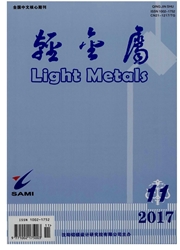

 中文摘要:
中文摘要:
本构方程很好地表达了材料的应力与应变速率、变形温度等热加工参数之间的关系,是描述材料变形的基本信息和有限元模拟中不可或缺的数学模型。基于两种典型的轻合金镁合金和钛合金,借助热模拟试验,对四种现有本构模型进行了示例对比分析,发现这四种本构模型都能在一定程度上很好地描述材料的流变应力与热变形参数之间的关系。基于Arrhenius方程的本构模型是在单一应变下建立的,反映了单一应变下温度、应变速率和应力之间的相互作用关系;基于应变补偿的本构模型则体现了温度、应变、应变速率和应力之间的复杂非线性关系;基于ANN的本构模型可以实现其他非实验条件的应力内插预测;基于物理概念的本构模型适合于高速率且应变硬化占主导的变形过程流变应力的预测。
 英文摘要:
英文摘要:
Constitutive equation which expresses well the relationship between the hot working parameters such as the stress and the strain rate, deformation temperature, is the integral mathematical model to describe the basic information of material deformation and finite element simulation. In this paper, the example analysis has been carried out based on the existing four constitutive modals by means of thermal simnlationtest of magnesium alloy and titanium alloy. It is found that the four constitutive models can well partly describe the relations between flow stress and hot deformation parameters. In addition, the constitutive model based on the Arrhenius equation is established under the single strain, however, the constitutive model based on strain compensation reflects the nonlinear relationship between temperature, strain, strain rate and stress. Furthermore, the constitutive model based on ANN can predict the stress by interpolation method on non - experimental conditions, and the constitutive model based on physical concept is suitable for the flow stress predic- tion during the deformation process of high rate and strain hardening playing dominant roles.
 同期刊论文项目
同期刊论文项目
 同项目期刊论文
同项目期刊论文
 期刊信息
期刊信息
